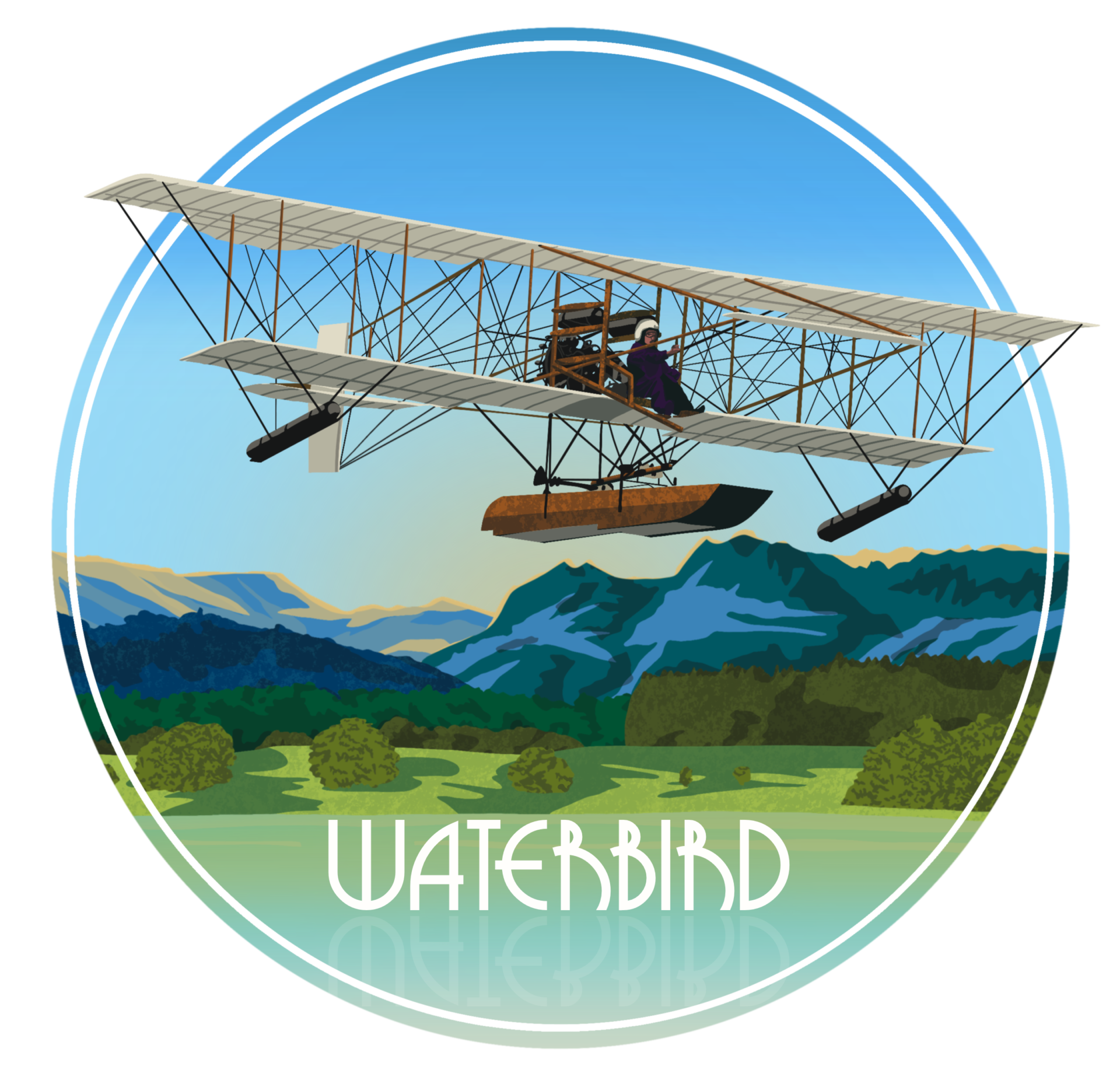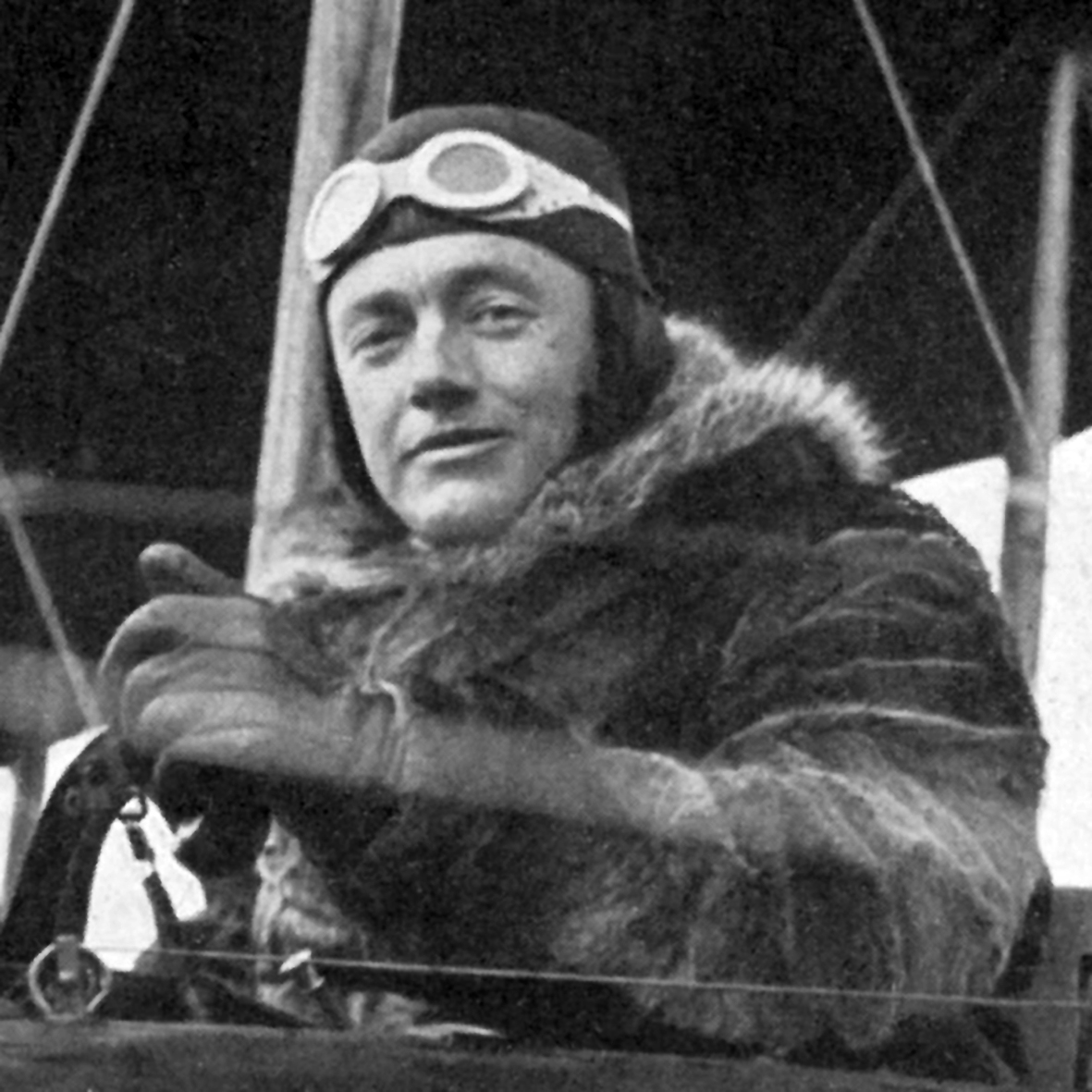Air Chief Marshal Sir Arthur Murray Longmore, GCB, DSO, DL, MIAeE (1885 – 1970)
Lieutenant Arthur Longmore test-flew Waterbird at Windermere for the Admiralty, his arrival having been kept a secret, on 20 January 1912. – Westmorland Gazette, 27 January 1912.
Longmore wrote in his book From Sea to Sky ‘I went up to Lake Windermere and flew the Wakefield machine, this being my first flight in a floatplane off the water, a very thrilling experience’. In an article in The Naval Review of January 1968, he wrote ‘It was my first effort with a floatplane and I finished right side up without dropping a wing, which is possible with a single float’.
His handwritten Report © Trustees of the National Museum of the Royal Navy is held at the Fleet Air Arm Museum, Yeovilton. A typed version is here.
This was the first successful flight in a floatplane by a Royal Navy officer.
On 1 December 1911, Longmore had become the first person in the United Kingdom to take off from land and alight on water in an aeroplane. This flight was achieved by way of a scheme of strapping pneumatic flotation bags, which had been designed for emergency descent to the water, to the undercarriage skids and tail, but the aeroplane had neither the power nor the structural strength to take off from the water. On 10 January 1912, Lieutenant (later Air Commodore) Charles Samson had achieved the first launch from a warship outside of the USA, also using an aeroplane fitted with airbags.
Longmore was one of the first 4 officers selected for flying training by the Admiralty, at Eastchurch on the Isle of Sheppey, and had achieved Royal Aero Club Aviator’s Certificate No. 72 on 25 April 1911. He also held Competitors’ Certificate No. 76 issued on 6 April 1912.
The first hydro-aeroplane meeting took place at Monaco 24-31 March 1912, at which Longmore attended as a representative of the Admiralty. He wrote in his book From Sea to Sky ‘As passengers had to be carried, I offered my services to Fischer [the overall winner of the tests], the pilot of a Henri Farman, an ordinary-type pusher-type biplane with a 50 h.p. Gnome engine and a pair of most insecurely mounted floats.’ This photo of him as passenger is from Captain Edward Wakefield‘s scrapbook. He travelled by the Blue Train and stayed at one of the best hotels for a week – it was some time before the department concerned at the Admiralty agreed to pay his unprecedented claim for expenses, but they eventually did so!
On 11 April 1912, Longmore was sent to the Deperdussin works at Paris to observe the wing loading tests of the aeroplane which Wakefield was contracted by the Admiralty to convert to a hydro-aeroplane. Flown to England by Deperdussin’s chief test pilot, the checkout was by Longmore before delivery to Windermere.
Longmore went to a conference at the Admiralty in November 1913, at which Captain (later Rear-Admiral Sir) Murray Sueter was also present, where discussion took place of his special enlistment scheme. ‘This conference marks the date when the Royal Naval Air Service virtually came into being and as a separate organisation to the Royal Flying Corps.’ – From Sea to Sky. [The official date for formation of the RNAS was 1 July 1914.]
On 28 July 1914, he made the first successful torpedo drop by a British aircraft and pilot.
On 15 June 1916, he took over command of RNAS Killingholme.
As a survivor of the First Hundred British Aviators, he attended a dinner on 12 July 1920 at the Connaught Rooms, London. The Guest List is here. He particularly remembered a speech by H G Wells.
His son, Wing Commander Richard Longmore OBE, DSO and bar was killed in action over the North Atlantic in 1943.
– In February 1914, Longmore flew Winston Churchill, then First Lord of the Admiralty, in a seaplane (see photo at the top of this page) at Portsmouth, who wanted to see for himself if a submarine could be detected when submerged. ‘He accordingly sent a signal to me at Calshot to say he would like a seaplane “alongside” the Enchantress at 10 a.m. next morning.’ – From Sea to Sky.

